If you’ve followed me on the forums at all, you know that the last 6 months have been a crazy time in Conductor’s life. Sold my house quicker than I expected, moved in with my parents (with my Wife, 4 kids, 4 dogs, and a cat), bought a new house, remodeled the whole thing, and moved in around Thanksgiving. I’ve been sitting on this tool for almost the entire time, but with no shop, no compressor, everything in storage, and nothing to use it on, I was pretty much out of options to do a quality review. I got my new shop set up yesterday and immediately got to work on getting caught up. I apologize to everyone for the extended absence and especially to Proto for the length of time this review has taken. I hope they will understand. This move has taught me several things, one of which is that I am never moving again. I plan to die there and any potential eviction will be at the hands of a SWAT team. Moving sucks!
Impact wrenches are a must have for any serious mechanic. Go to just about any automotive shop or industrial facility in America and you’ll hear that familiar buzz of an air impact. While an air impact may not be a newly invented tool, over the past few years we’ve seen their torque ratings increase significantly thus creating a class of tools many call “high” or “super” torque. As the king of industrial tools, Proto decided it was time to show up to the party and they’ve made a dramatic entrance. Proto didn’t simply throw their name on a tool OEM’d by someone else either. They developed it from the ground up to the specifications they felt their customers desired.
The current lineup features 4 pistol grip models consisting of a 3/8″ model, a 1/2″ compact model, a 1/2″ standard model, and a 3/4″ model. While this review focuses on the pistol grip models, there are also 2 right angle head models in both 3/8″ and 1/2″.
For our review we received the 1/2″ Standard model (J150WP), but calling it a “standard” model is like calling the Empire State Building an office complex, it may be technically true, but it really does it no justice. But enough jabbering, let’s get down to business!
Specifications
- The J150WP boast some class leading numbers
- DRIVE SIZE – 1/2″
- BREAKAWAY TORQUE FT LBS – 1260
- BLOW RATE FORWARD BPM – 1160
- FREE SPEED RPMS – 7225
- AVERAGE AIR CONSUMPTION CFM – 5.1
- WEIGHT LBS – 4.6
- OVERALL LENGTH IN – 7-3/32
If you’re anything like me, the first number that you paid any attention to was that beastly 1260 ft. lb. torque rating. If you’re reading this article I’d just about bet the farm that 1260 ft. lbs. of bolt busting power is all you’ll ever need and then some. There is truly no job this bad boy can’t handle. The weight, size, and air consumption rate are right on par with other titanium bodied units in it’s class and suitable for extended use.
Features:
Proto clearly designed these guns with the user in mind. The Titanium housing keeps the gun at a comfortable weight and when combined with the “handle forward” design that places the handle more toward the middle of the gun, it keeps the gun remarkably well balanced for a heavy duty unit and with the air fitting detached, it will actually stand up on it’s own. If you have any experience with impacts, you know that is highly unusual. The “hog ring” style anvil makes socket changes a snap while still keeping the socket securely in place. The rubber grip features a “checkered” style pattern that provides a secure grip even with greasy hands. The ergonomics on this gun are awesome! The feather trigger makes the gun easy to control in terms of speed and requires next to no effort to pull. To control all that power, Proto included a 3 position power regulator for the forward gears which is located behind the trigger rather than on the back of the unit and adjustments can be easily done with 1 hand. The south paws among us will also appreciate the ambidextrous forward/reverse and power selector switches that facilitate full adjustments with either hand. This model also features a swiveling receiver for the air coupler of your choice helping to prevent hose binding, and a clevis for tethering which can be removed or applied based on your needs/preference. The gun features 3 forward torque settings to give the user the ability to limit forward torque to meet the demands of the application. Proto doesn’t quote any specific torque numbers for the 1st and 2nd speeds, as actual torque output will vary depending on your individual components (Compressor, hose, fittings, etc.), but 1 is the lowest and 3 is the highest. The side fed, 6 vane, motor ensures you always get full power in reverse.
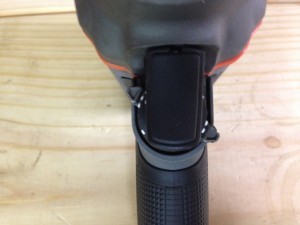

In the interest of full disclosure:
I wanted to give my impact the best chance of success for testing purposes. Manufacturers put their name on the line by sending their products to unheard of writers like me to critique their tools. I feel I owe it to them as well as the readers to provide a test that truly portrays the tool’s ability. In light of this, I spent $75 to retrofit my hoses, tools, compressor, etc. with high flow air fittings. I selected the Milton P-Type automotive style fittings. Traditional 1/4″ Industrial fittings allow about 40 scfm of flow. The Milton P-Type fittings offer almost 70. This gives the tool more air which equates to more power. There are literally a dozen or more types of air fittings and while I can’t honestly tell you what it was that made me decide of the P-Type Miltons, I’m glad I did.
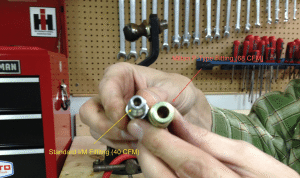
The Test:
I don’t work on heavy equipment, so as I wandered around the shop trying to figure out what I could do to provide a somewhat demanding test I was a little stumped. Busting lug nuts off my truck or tractor is mere childs play to an impact with 1,260 ft. lbs. of breakaway torque. Not having access to a several hundred ft. lb. torque multiplier limited the situations I could manufacture, so I asked myself “what is the toughest fastener I can realistically find?” After a few minutes of thinking I remembered back a year or so ago when I decided I was going to take my trailer hitch ball off and replace it. I pulled my guts out trying to get that thing off. I gave it a shot of WD-40, PB Blaster, and a propane torch, and it never budged with a wrench. I bought it years ago (I’m guessing 10-12 years ago) and while I have re- painted it a couple of times, the ball has never been off. I always told myself if I ever got it off I’d put it back on with some Never- Seize on it, I just never got it off. It’s stayed on my truck pretty much constantly since I got it and this makes the 3rd truck it’s been on. With all the mud, snow, and road salt here in WV, that thing is on there!
Performance:
After dialing my 60 gallon, 5HP, compressor in to 90 psi and attaching a 1-1/2″ impact socket (also Proto), I was all set. When I pulled the trigger It was clear I had some serious power in hand. I cycled through the torque settings, placed it on my hitch ball, and as for what happened next, well, see for yourself:
https://youtu.be/3IpcsB6xU3U
The 1 handed operation, perfect balance, and monster power made it a real joy to use. It’s also important to note that 1-1/2” is the largest socket many manufacturers offer in 1/2” drive and are typically used in 3/4” service. All in all I feel this is a pretty decent real world test.
I was genuinely delighted with the impact. The comfort and performance were superior to any of the impacts I’d used before it, however, I wanted to get some other opinions on it to see what qualities others appreciated. I gave 3 different buddies the opportunity to play with it and all 3 commented instantly on the comfort and balance with 1 saying it was “the first 1/2″ Impact he’d ever used that he couldn’t see himself ever needing 2 hands to operate”. The comfort is there, the performance is there, and if aesthetics are a concern, it looks awesome too.
Tool Trucks Take Notice:
If you’re a Snap-On dealer you’re going to hate this part of my review. I wanted to see how the J150WP stacked up against one of the most popular impacts in professional shops across America. The big boy in this category is Snap-On’s heavy duty MG725. Here is a side by side comparison of the numbers:
SO MG725Max
- Max Torque – 1190 ft. lbs
- Length – 7.7″
- Weight – 4.8 lbs
- RPM – 9800
- BPM – 1270
- Price – $473*
Proto J150WP
- Max Torque – 1260 ft. lbs
- Length – 7.3″
- Weight – 4.6 lbs
- RPM – 7225
- BPM – 1160
- Price – $269**
While the differences in size, weight, rpm, and bpm are fairly negligible in the grand scheme, power and price are the big concerns for most buyers. The J150 offers more power, in a smaller, lighter, frame, at a price nearly 40% less than the MG725. I’m not implying that the MG725 isn’t a capable gun, or that Proto intends on being a major player in the automotive market (that’s what Mac is for), but if you’re earning a living as a professional mechanic you want to make you’re tool investments wisely and the J150WP offers 4.7 ft. lbs. per $, whereas the MG725 offers a mere 2.5. If you’re bad at math that’s almost twice the power per dollar! And in terms of balance and ergonomics, it isn’t even close.
*Price taken from Snapon.com
**Cheapest Price found via Google Shopping
Conclusion:
I was very happy with the J150WP. I made it a point to handle every impact I came across, in every store I was in, and none could touch it in terms of comfort and balance. It is truly a professional caliber tool, for professional caliber work. It carries a 2 year warranty and I’m delighted to find out that should you ever experience any problems, you can take it to any Dewalt Service Center for repair. This makes the Proto air tools an attractive option, especially to professional users and the price makes it a viable option for serious DIY guys as well. The only negative I can offer is that there is no protective rubber boot offered for the tool. That isn’t a huge deal, but if you’re like me, you try to keep your tools looking as nice as possible. Stay tuned to TIA for more Proto reviews as the air tool line expands.

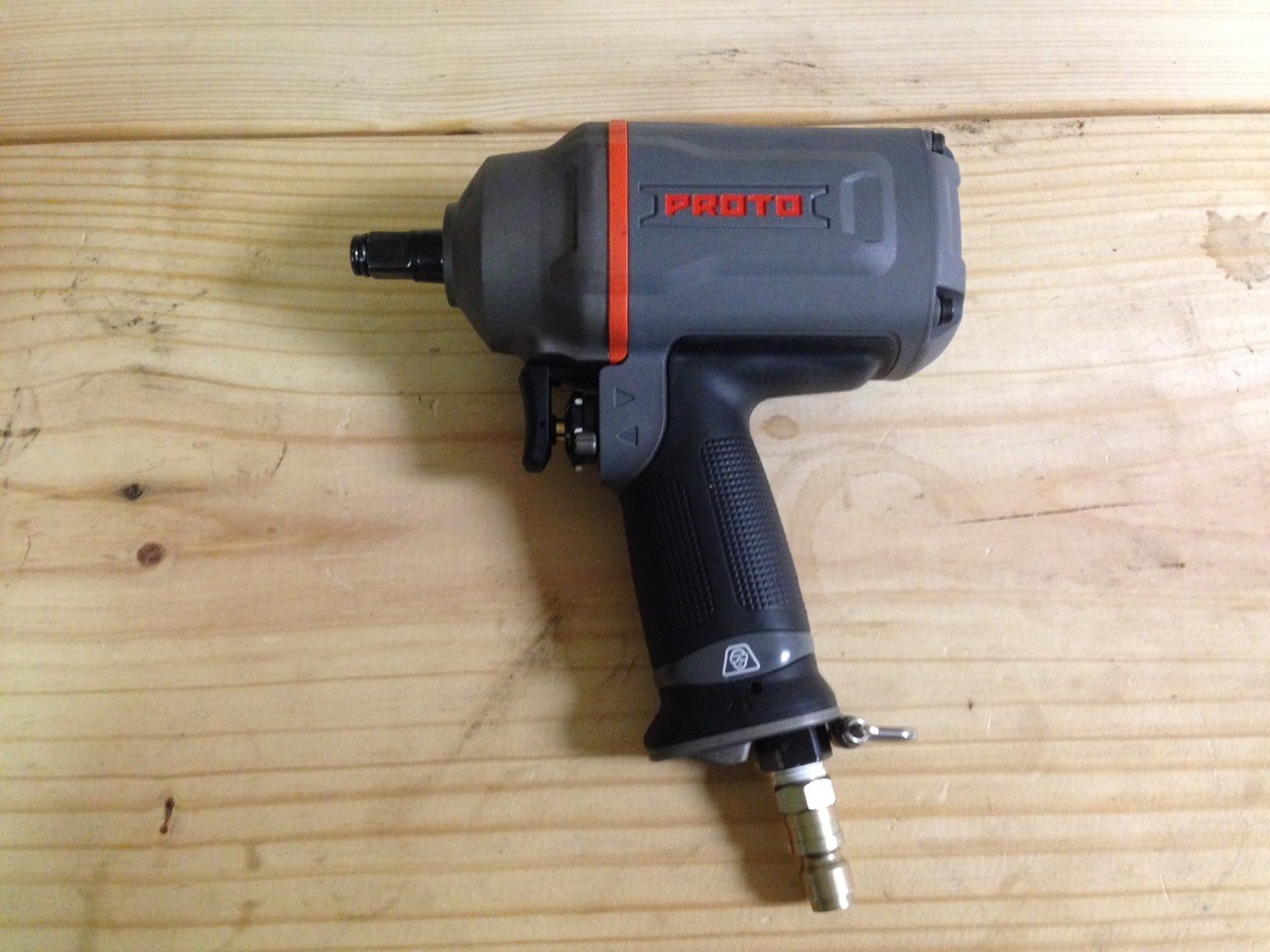

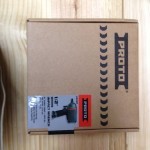
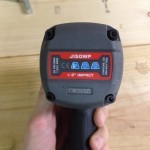
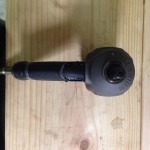
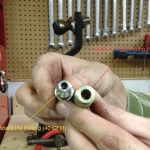
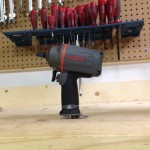

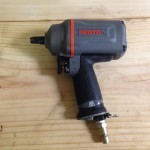
Great review Travis!!!! This thing is a beast!!! I really like how you included the video, it busted it right off! Cant wait to see more proto reviews.
What kind/size of air compressor do you guys recommend for a new home owner? I’d use it for nailing, auto work, painting and probably get an air chisel to have fun…
thanks, yall are awesome!
I run a 5 HP, 60 gallon, 2 stage, because I wanted to be able to do some light sandblasting, but that may be a bit much if you don’t have a lot of room and don’t plan on running a lot of air tools.
What is you budget?
If you want, jump over to forum, post what you’re looking for, and we’ll help you out.
Id say top end of budgets around 350$ and ill post on forum right now, thank you for replying!
Your going to need a fairly beefy unit to handle doing some of that. Nailing, and some auto tools will be fine with a small compressor, but the other things like painting any sort of auto body work and some of the bigger mechanics air tools your going to need a unit that has a large tank with and can put out some decent CFM
Thanks Jason ill keep that in mind! Im going to post on forum now too ! Thank you and conductor562!
Great Review Conductor! Very detailed and through. I really liked how you can dial it n. That has some serious power. After reading everything and watching the video I am sold!
I figured it wouldn’t take long for you to find out about proto air tools. It looks like a good one and great review.
Great review
Conductor is back doing reviews and hits it out of the ball park reviewing an awesome impact wrench that looks awesome and wont break the bank either!
Wow, that is actually a nice price for that kind of performance! I already have an impact wrench (much heavier, HF brand) that works just fine. So tempted to upgrade!
Great review of an awesome tool. Hope to see more reviews from you in the future. Thanks Conductor!
As always conductor, great review.
Looks like a great drill.
Hi Travis: We have it on our website for $250 with free shipping. https://www.trident-supply.com/PROTO_3_8_DRIVE_AIR_IMPACT_WRENCH_p/577-j150wp.htm
Picked one up yesterday after they just came in at my local dealer. Was going to pick or a IR titanium model but for the price I couldn’t pass it up. So far very impressed with the power and balance after using a ir 231 for years.
They do offer a boot as well. They didn’t have it in stock but should be seeing it early next week. I will let you know how she fits.
Cool, can’t wait to hear more what you think about them. Conductor loves them and is always raven about them also.
Nice review. Just got an MT2769, will be testing that. Still waiting to get one of these and test it. No surprise it’s stronger and lighter and less expensive than an MG725. There are others as well. Personally I wouldn’t even compare it to one,myself. The MG is heavy, loud ,slow, overpriced and under-powered for it’s 8-vane rotor that it employs. Not well engineered from my experience with them. They have some reliability problems, just like any other as well.They do have some quality parts.used in them, though.